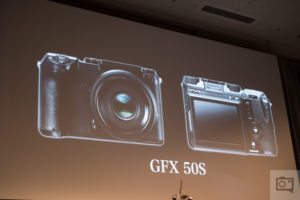
How would like a camera that is smaller than your current D-SLR and yet can shoot in low-light conditions, producing images that are sharper than you're used to? That’s the promise of curved sensor technology, and it’s about to hit commercial cameras.
Image by James Bold
The emergence of the curved image sensor may be the biggest advance in camera technology in decades, But what’s so special about it and how does it work?
Curving an image sensor allows for simpler, smaller lenses with larger apertures as well as dramatically improved image quality. It seems counter-intuitive that such a simple change could achieve so much, but actually it’s all pretty logical when you think about what’s happening inside a camera.
Traditionally, camera sensors have been flat. A camera lens focuses a beam of light onto the surface of the sensor. In compressing the scene to the size of a sensor, the lens creates a cone of light.
This cone shape causes those photons to hit the sensor at different angles. The light in the centre has a shorter journey than that at the edges, so it has a slightly different focal point. As a result, the centre of the frame tends to be sharper than the edges.
Image by Jakob Owens
To compensate for this, optical elements are added to lenses and lenses are made aspherical. These help to improve the edge softness but they rarely eliminate it altogether. Also, lens distortions such as chromatic aberration tend to remain.
If the sensor is curved in such a way that each photon of light hits the sensor at the same time, these extra lens elements are no longer required. Even better, the fewer elements in the lens, the less glass there is for the light to pass through and therefore the less light is lost.
On top of that, the fewer glass elements there are, the smaller and lighter the lens can become. The reduced number of optical elements could even result in lower manufacturing costs.
Early tests were carried out by bending commercially available sensors. When tested in a prototype camera with a lens specially designed to work with a curved sensor, the results were about five times sharper than a standard D-SLR camera.
In the same tests, the improved light loss meant that illumination uniformity far exceeded the performance of much larger professional camera systems equipped with similarly fast lenses.
Image by Graham Holthausen
Not only does this technology improve sharpness, light uniformity and lens size, it can also be done by converting commercially available image sensors. Manufacturers can essentially take off-the-shelf sensors, curve them, and dramatically improve the performance of their optical systems at a relatively low cost and with effectively no downside.
It’s possible that we’ll see new camera and lens combinations that are smaller than we’re used to, but which have image quality comparable to much larger cameras.
So, what do you think about this development? Could it be the closest thing to a paradigm shift that we’ve seen in D-SLR camera technology for years? Or do you think the implications of this new technology are less exciting than the current hype would have us believe?
. digitalrev.com2017-7-31 03:00













